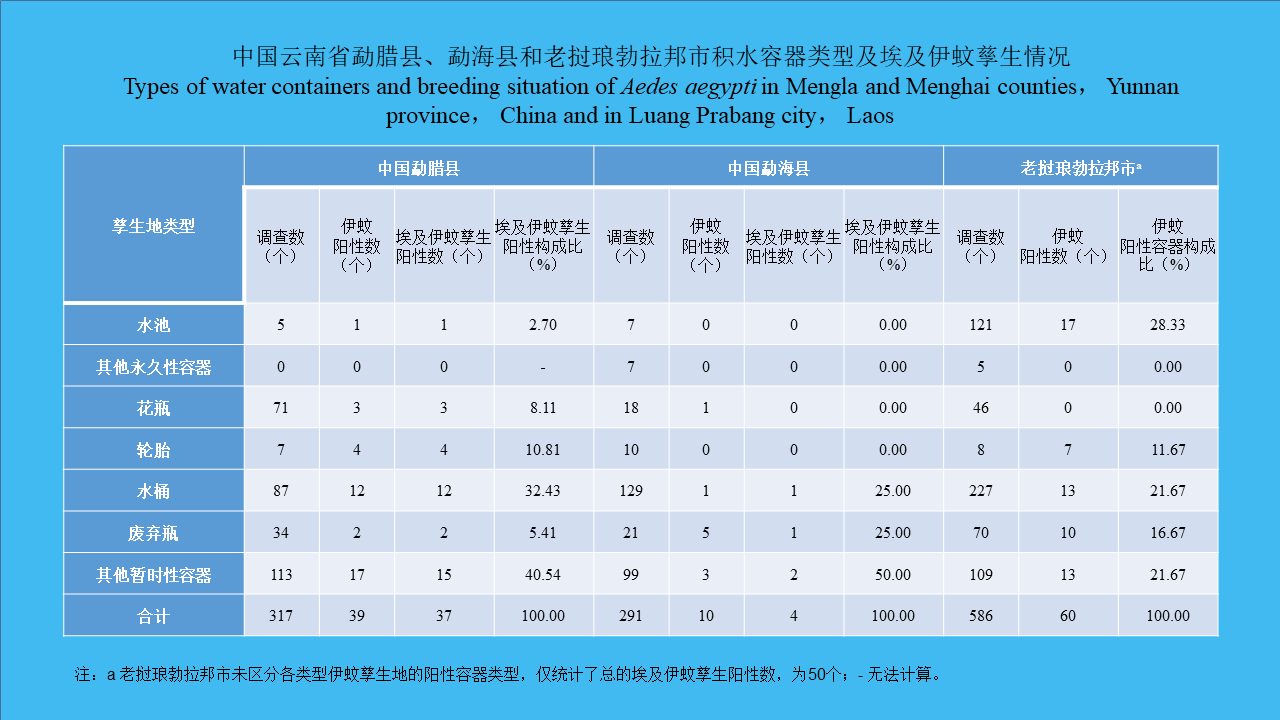 PDF(554 KB)
PDF(554 KB)


中国-老挝登革热重点地区埃及伊蚊孳生习性及杀虫剂抗性水平比较研究
兰学梅, 魏春, 朱进, 李俊明, 罗春海, 杨明东, 容艺函宇, 姜进勇
中国媒介生物学及控制杂志 ›› 2023, Vol. 34 ›› Issue (2) : 238-243.
 PDF(554 KB)
PDF(554 KB)
 PDF(554 KB)
PDF(554 KB)
中国-老挝登革热重点地区埃及伊蚊孳生习性及杀虫剂抗性水平比较研究
 ({{custom_author.role_cn}}), {{javascript:window.custom_author_cn_index++;}}
({{custom_author.role_cn}}), {{javascript:window.custom_author_cn_index++;}}A comparative study of breeding habits and insecticide resistance of Aedes aegypti in key areas of dengue fever in China and Laos
 ({{custom_author.role_en}}), {{javascript:window.custom_author_en_index++;}}
({{custom_author.role_en}}), {{javascript:window.custom_author_en_index++;}}
| {{custom_ref.label}} |
{{custom_citation.content}}
{{custom_citation.annotation}}
|
/
| 〈 |
|
〉 |